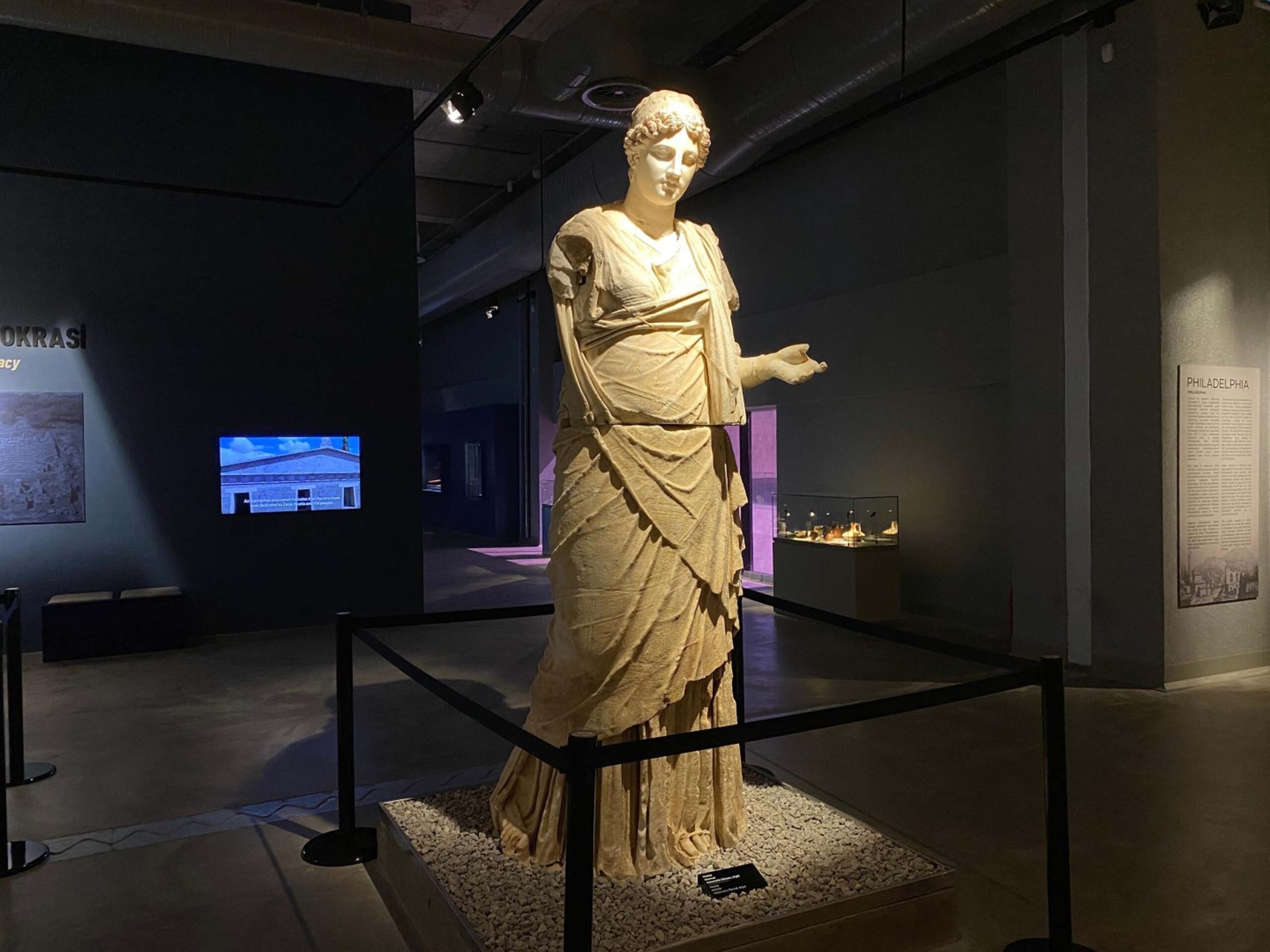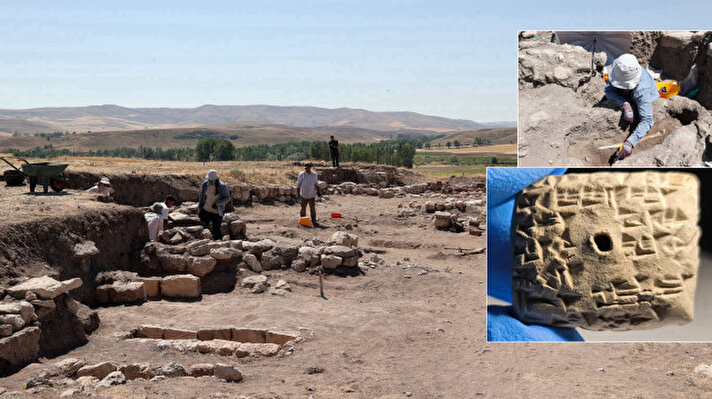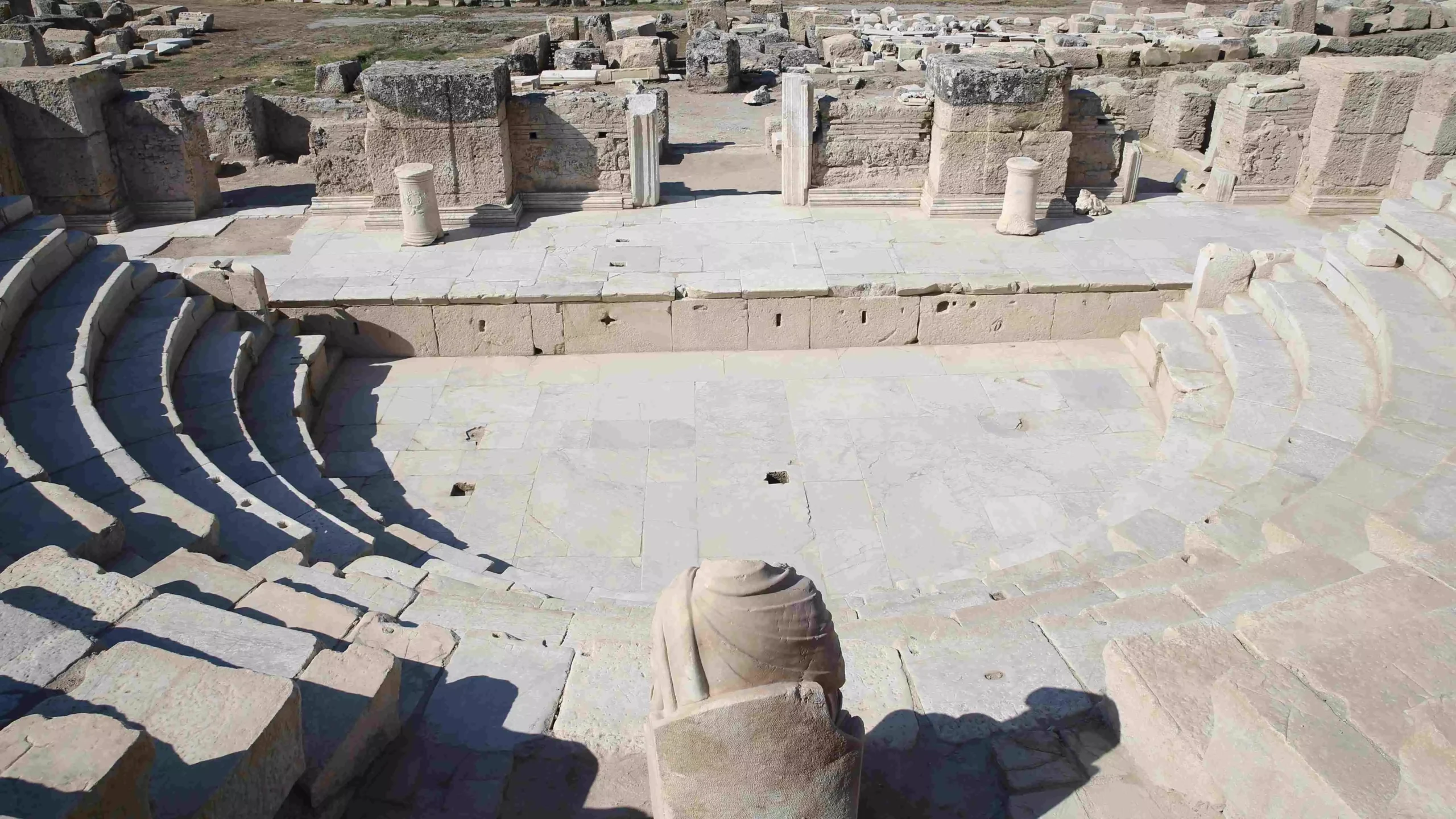A rare statue of the goddess Hestia, revered in antiquity as the protector of homes and cities, has been unveiled to the public for the first time at the newly opened Manisa Museum in Türkiye.
The 2.7-meter-tall marble sculpture, discovered in 2005 during archaeological excavations in the ancient city of Aigai in Manisa’s Yunusemre district, is believed to be the only surviving statue of Hestia from the Hellenistic period.
After nearly two decades in storage, the statue has found a permanent home at the heart of a specially curated exhibition that replicates the architectural layout and ambiance of Aigai’s Bouleuterion — the ancient city’s council hall where the statue once stood.
“This is not just any artifact,” said Professor Yusuf Sezgin, head of the Aigai excavation team and chair of the archaeology department at Manisa Celal Bayar University. “This is the only known statue of Hestia from the Hellenistic period to have reached us intact. It stood in the heart of Aigai’s public life, overseeing council decisions as a divine symbol of civic unity and order.”
In ancient Greek cities, statues of Hestia were traditionally placed in council buildings, representing spiritual and political stability and serving as a symbol of collective life and governance. Professor Sezgin emphasized that the museum’s decision to recreate the statue’s original setting offers visitors a direct connection with the ancient world — allowing them to view the sculpture just as Aigai’s lawmakers once did.
The unveiling of the statue is considered a milestone for both archaeological preservation and museology in Türkiye, shedding new light on the civic and spiritual life of ancient Hellenistic cities.







